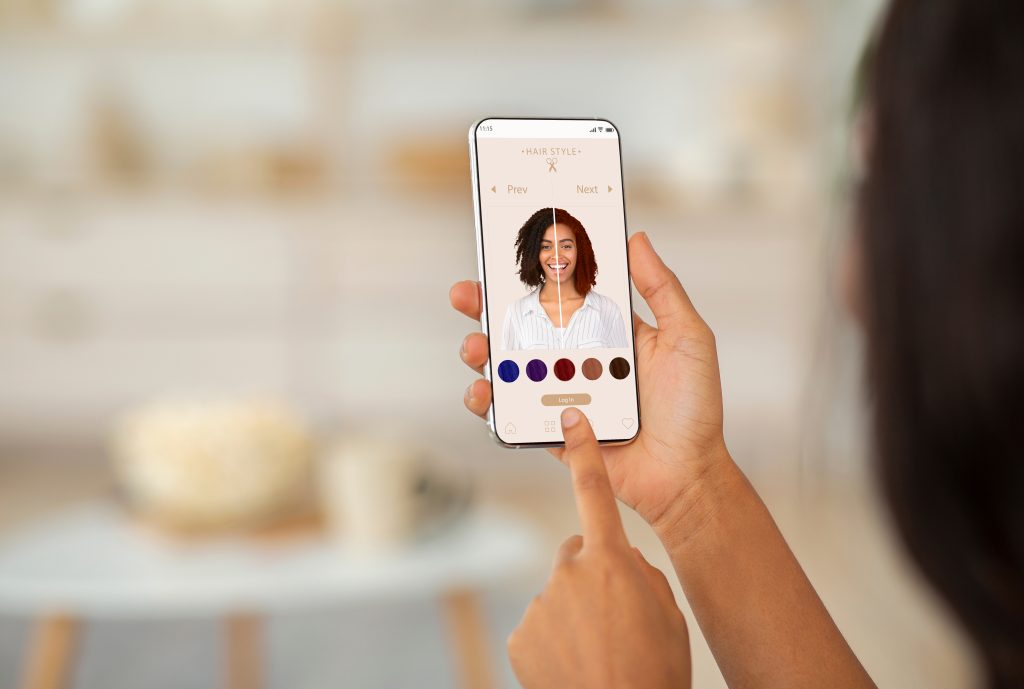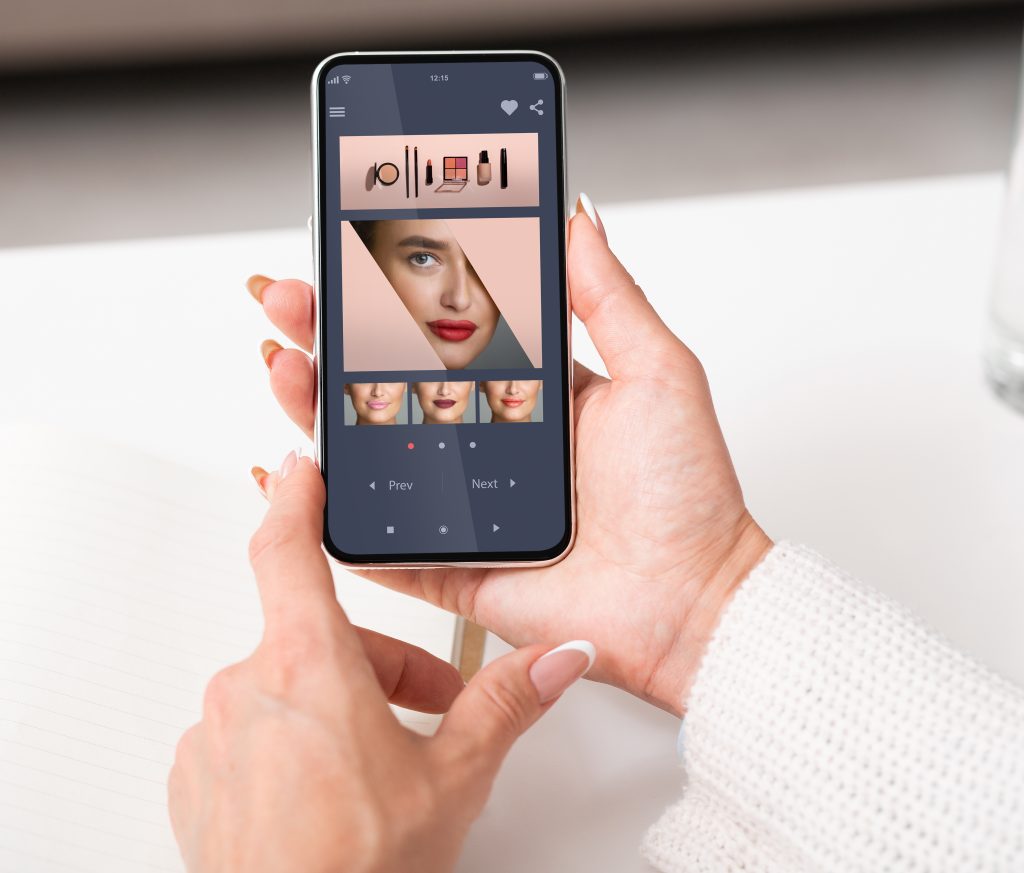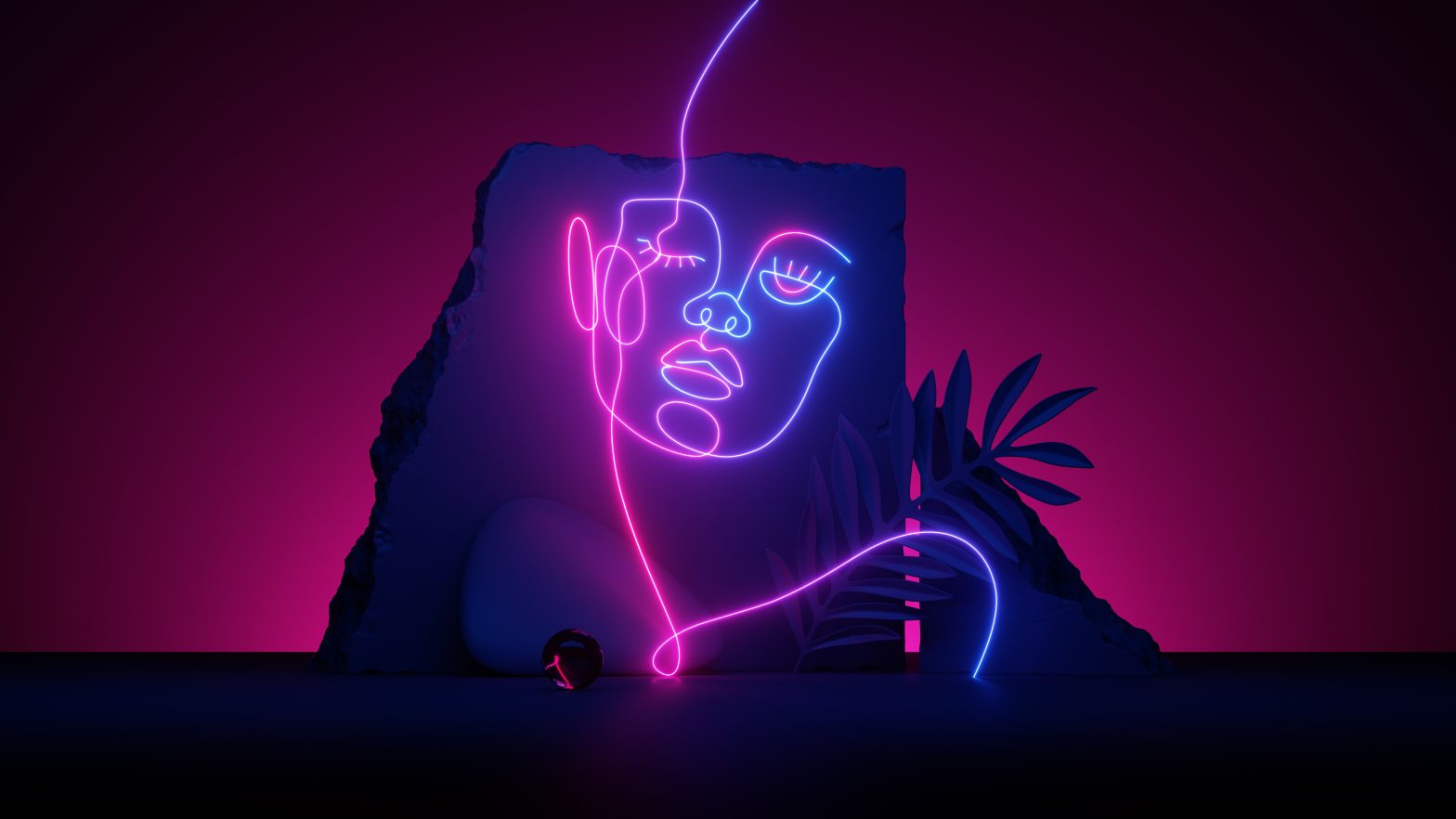Make-up has always played a central role in our society, from predicting recessions (yes, really) to redefining gender norms, and remains a time-honored form of self-expression and liberty.
Now that we find ourselves in the age of A.I., make-up brands must evolve to offer customers the degree of personalization they now come to expect before purchasing. Simply put, the beauty industry is in the midst of a revolution. Technology offers the key to the future of Hyper-Personalization, forever changing how we interact with and experience beauty products.
“The Consumer of the Future craves personalization at the time of purchase. They are looking for convenience and beauty products that allow them to express themselves truly. Virtual Try On technology is part of an AI journey for The Consumer Of The Future that will revolutionize how users shop for cosmetic products.”
~ Humphrey Ho, Managing Director, Hylink Group Americas
How AI and AR Work in the Beauty Industry:

Personalized product recommendations are being made possible through artificial intelligence (AI) technology.
AI algorithms continually analyze customer data to create customized recommendations based on individual customer preferences, past purchases, and browsing history. At the same time, augmented reality (AR) allows customers to preview how a product will look on their own faces before committing to purchase. Brands may analyze the feedback generated from this preview phase to inform future product lines to meet emerging demand.
AI and AR technology helps people find the best products based on their unique individual features, reinforcing the fact that a one-size-fits-all approach is no longer viable.
Moreover, technology enables beauty brands to align with the ethical values of their customers by reducing product wastage and unnecessary testing of samples through the implementation of AI and AR.
As consumers demand more ethical consumption practices, beauty brands that adopt this approach will retain more customers and increase revenue.
A Few Relevant Statistics:
- A recent study by Snapchat found that 92% of Gen Z consumers are interested in augmented reality during a shopping experience.
- Epsilon identified that 80% of clients would buy from brands offering personalized products.
- According to Forrester, 77% of consumers have chosen, recommended, or paid more for a brand that provides a personalized service or experience.
- Forbes has reported that 71% of consumers feel frustrated when shopping experiences are not personalized.
- Products featuring AR content and filters showed a 94% higher conversion rate than products without AR, according to a report by Shopify.
Benefits of Using AI/AR Technology in the Beauty Industry:
- Increased Sales: Personalized experiences can increase sales by encouraging customers to buy more products and services.
- Improved Customer Satisfaction: Personalized experiences can help to improve customer satisfaction by making customers feel like they are getting a more tailored service.
- Reduced Costs: AI and AR can help to reduce costs by automating tasks that human employees would otherwise need to perform.

How Your Beauty Brand Should Use AR and AI:
To effectively integrate AI and AR technology into online and offline shopping experiences, beauty brands must ensure their technology is accessible and user-friendly. This means investing in proven, quality-tested apps that are easy to navigate by customers online, as well as by brand associates dedicated to assisting customers with in-store questions and purchases:
Online:
- Virtual Try-On: As we said before, AI and AR allow customers to see how different products will look on their faces or bodies before buying them. An excellent way for customers to experiment with different looks and find products that suit them best.
- Personalized Product Recommendations: AI analyzes customer data such as past purchases and browsing behavior to generate customized product recommendations, helping customers discover new products they might not have found otherwise. AI can also analyze a customer’s skin to choose the best product for their individual needs.
- Live Beauty Tutorials: AR instructs customers how to apply makeup or do their hair from the comfort of their own homes. An excellent way to increase brand awareness and customer loyalty at an efficient spend.
Offline:
- In-Store Consultations: AI and AR can optimize in-store consultations with beauty professionals. Customers receive the benefit of technology mixed with personalized advice and recommendations from experts.
- Augmented Reality Mirrors: Customers are able to see how different products will look on their faces prior to purchase. A powerful and useful tool to reinforce brand value and retain customer loyalty.
- Personalized Product Displays: AI can be used to personalize product displays in stores to match the needs of individual customers. This allows for far more versatility in the Point of Sale category than traditional methods and helps create a more engaging shopping experience.
Conclusion
At Hylink, we believe the Consumer of The Future not only needs but demands the use of virtual try-on technologies and interactive and experiential elements to help them connect with brands in impactful and meaningful ways.
The future… has arrived, but the substantial role the beauty and make-up industry plays in society is here to stay.
AI and AR technology allows beauty brands a wide variety of seamless integration options to provide customers with a more enjoyable and interactive experience and help ensure their customer base remains loyal and satisfied.
